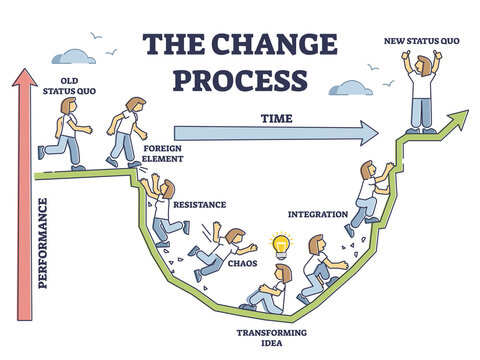



We are experiencing unprecedented pandemic-related times, during which employees across all organizations are attempting to adjust to changes in both their personal and professional life. Organizational change can be strategic, technological, people-centric, or structural. The workforce is resisting all of these changes out of concern for potential danger or inconvenience.
Remote workplaces and cultures have grown in significance as a result of the pandemic era we are currently experiencing. There is a demand for remote training given the distributed nature of the workforce.
Our guest speaker Dr. Britt Andreatta, CEO and Founder of 7th Mind Inc., discusses the brain science behind these shifts in this webinar from the Digital Adoption Summit.
Biologically, we are designed to resist change depending on the degree of upheaval it generates. We consider any modification to be potentially dangerous. Thus, these alterations cause some unfavorable emotions in people, such as fear and stunned denial.

These emotions gradually transform into stress, worry, and rage, then into perplexity, frustration, and sadness. When it comes to organizational or technological change, leaders frequently face significant opposition. This approach makes the transfer period challenging, and staff members frequently quit.
Three sorts of resignation are experienced by leaders in reaction to these organizational changes:
In order to manage change and lessen employee resistance, communication about the change is essential. When the roll-out is announced as a well-reasoned conversation rather than a statement, resistance is greatly diminished.
Instead of feeling threatened by the change, the workers must embrace it. Inform the appropriate individuals and through a variety of channels about the specifics of the change. People are more likely to be supportive of organizational change when they understand that their wellbeing was taken into account.
Time, as well as disruption and resistance, are critical components in change management. Every change roll-out has a unique schedule, and individuals react to the change in unique ways. Accepting change also depends on whether or not individuals get to select it and whether or not they want it. Almost 47% of senior executives experience change fatigue and struggle to keep up with change.
However, once motivated, people adapt to the new routine and consider the advantages of the transformation. Their behavior is motivated by emotions like engagement, curiosity, healthy skepticism, and patience.
A neural pathway is created in our brains by all types of learning. Throughout our lives, our brain has the structure and capacity to build new neural connections. This skill transfers directly to constant learning, which is essential nowadays. Before developing the learning process, it is important to keep the following in mind:

The following tools are useful for customer training at various customer journey stages:
Whatfix Digital Adoption Solution is a custom training solution designed to enable learning throughout the customer journey. With its in-App guidance, multi-format content, and ongoing support, Whatfix has already become a favorite of several Fortune 500 customers. Continuous training and self-serve contextual support will help you to overcome the resistance offered by your employees.
You can concurrently develop a presentation, an article, a video, and a pdf for the same information since different types of content appeal to different audiences. Any changes made to any of the assets will also be automatically reflected everywhere.
The transition state is when the majority of changes fail. Whatfix will make this simple for you by speeding up implementation, lowering the volume of support tickets, and giving your staff members a tailored experience based on behavioral characteristics.
Some of the most important lessons from the webinar included these. You can sign up for our on-demand webinar tape here in case you missed our webinar or want to learn more about “Leading Successful Change to Remote Training” if you did.
These were some of the key takeaways from the webinar. In case you missed our webinar or want to know more about ‘Leading Successful Change to Remote Training,’ you can tune in to our podcast episode.
Copyright © 2025 Whatfix. All rights reserved
This website is owned and operated by Whatfix Private Limited (Formerly known as Quicko Technosoft Labs Private Limited)